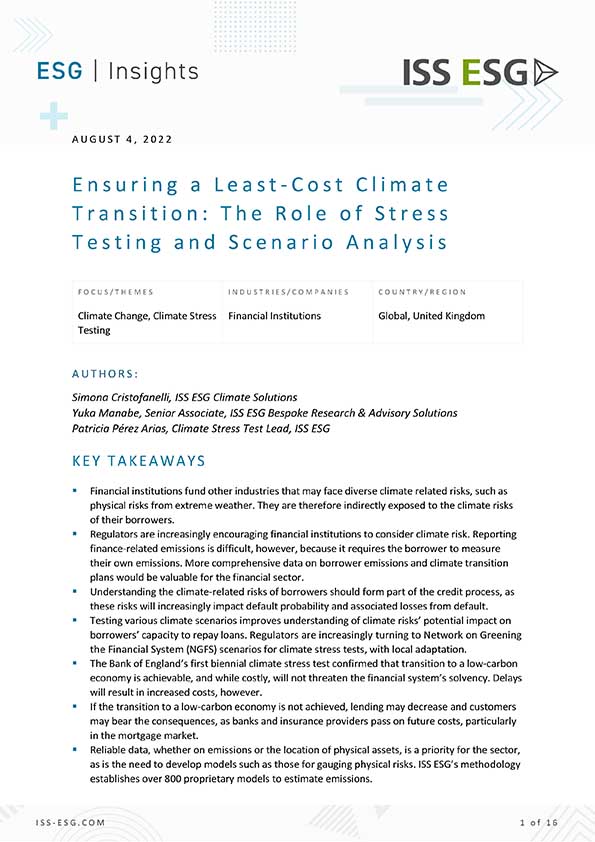
Ensuring a Least-Cost Climate Transition: The Role of Stress Testing and Scenario Analysis
AUGUST 4, 2022
KEY TAKEAWAYS
- Financial institutions fund other industries that may face diverse climate related risks, such as physical risks from extreme weather. They are therefore indirectly exposed to the climate risks of their borrowers.
- Regulators are increasingly encouraging financial institutions to consider climate risk. Reporting finance-related emissions is difficult, however, because it requires the borrower to measure their own emissions. More comprehensive data on borrower emissions and climate transition plans would be valuable for the financial sector.
- Understanding the climate-related risks of borrowers should form part of the credit process, as these risks will increasingly impact default probability and associated losses from default.
- Testing various climate scenarios improves understanding of climate risks’ potential impact on borrowers’ capacity to repay loans. Regulators are increasingly turning to Network on Greening the Financial System (NGFS) scenarios for climate stress tests, with local adaptation.
- The Bank of England’s first biennial climate stress test confirmed that transition to a low-carbon economy is achievable, and while costly, will not threaten the financial system’s solvency. Delays will result in increased costs, however.
- If the transition to a low-carbon economy is not achieved, lending may decrease and customers may bear the consequences, as banks and insurance providers pass on future costs, particularly in the mortgage market.
- Reliable data, whether on emissions or the location of physical assets, is a priority for the sector, as is the need to develop models such as those for gauging physical risks. ISS ESG’s methodology establishes over 800 proprietary models to estimate emissions.



